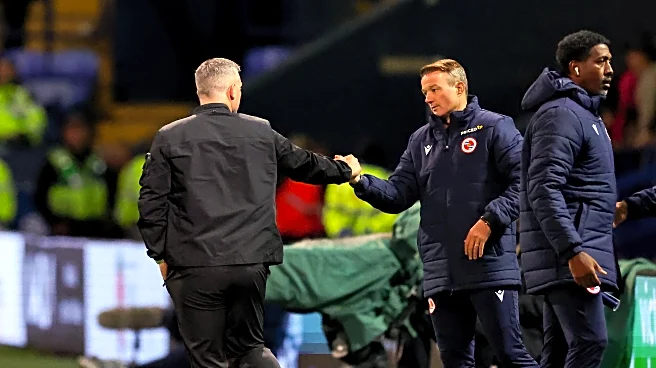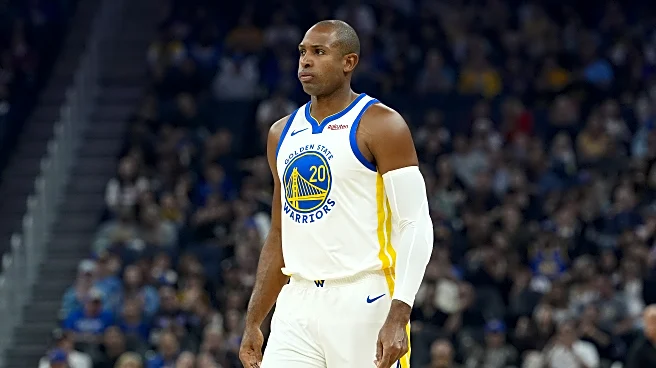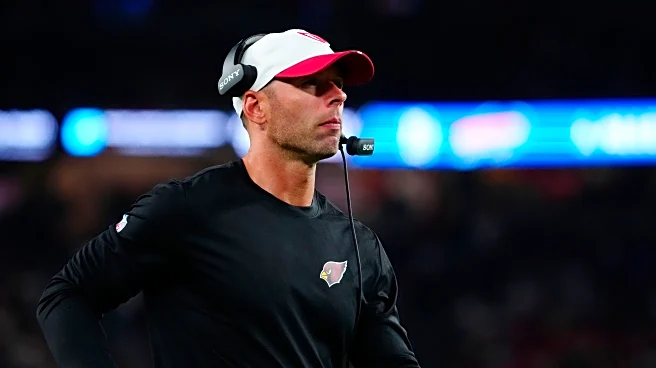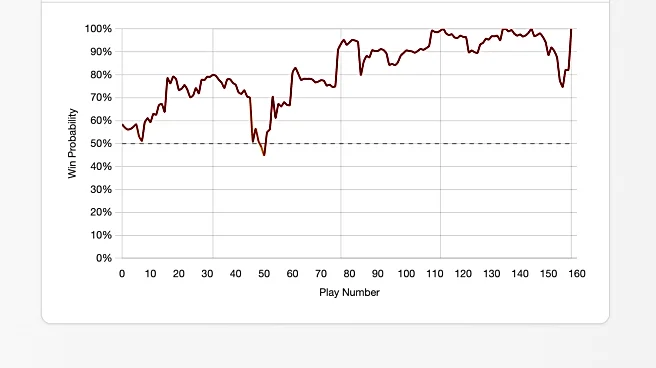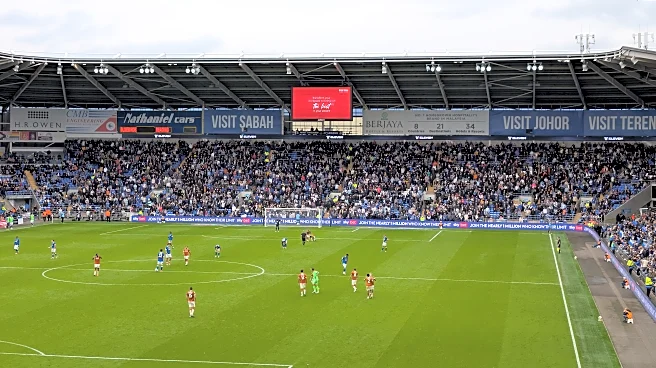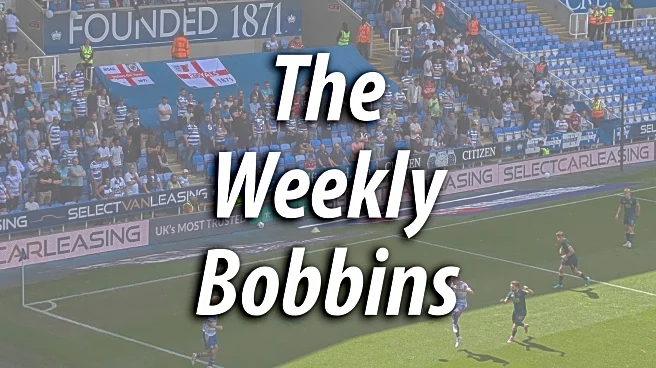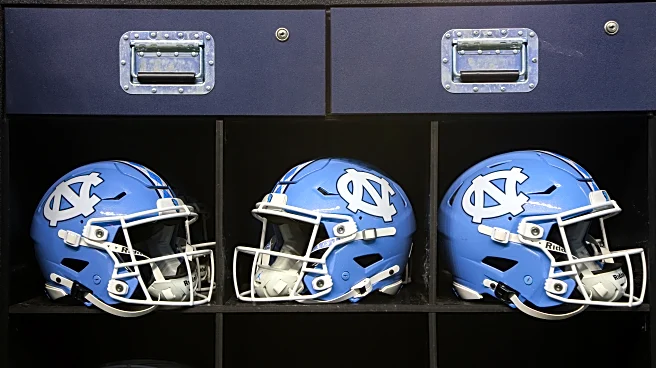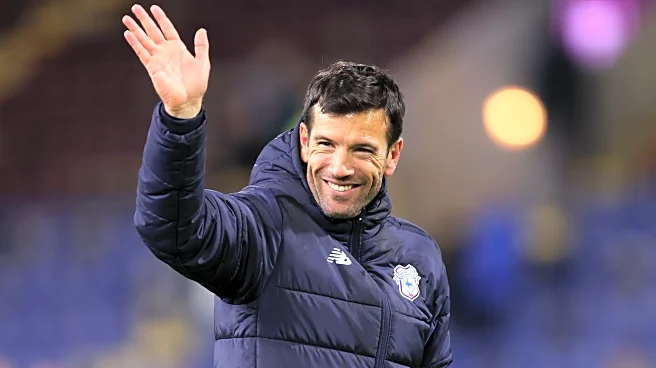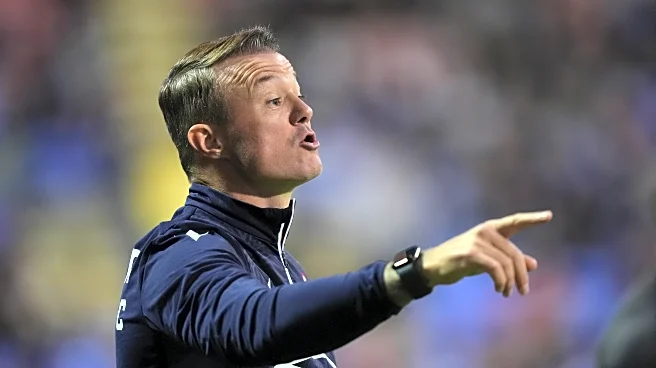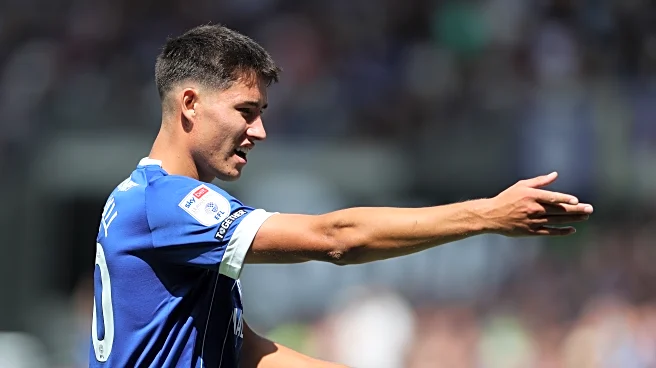Editor’s note: This article was written before Reading’s game at Cardiff City on Saturday, although stats have been updated to include that match (unless otherwise stated).
One of the major talking points
so far this season is the position of Noel Hunt as Reading manager.
Hunt became our manager following Ruben Sellés’ move to Hull City in December 2024, proceeding to take the club to a seventh-placed finish, with the club missing out on a play-off spot on the final day of the season.
After five league defeats in his first 10 matches, Hunt guided Reading to only three defeats in the subsequent 19 matches, including nine wins. However, a slow start to this season and some less than stellar performances have led to calls for him to be sacked as Reading manager.
I will be making a case for the club to retain Hunt as manager, but I will give a bit of context as to why I’m writing this article. If you don’t want that context, feel free to skip directly to the section where I discuss Hunt.
Section 1: Defending my comments
A couple of recent Twitter polls showed strong support for the sacking of Hunt, with The Tilehurst End’s poll showing nearly 86% in favour from 931 votes. A similar poll by RFC Latest found 84% backing the ‘Hunt Out’ camp after 1,407 votes.
I posted on the Hob Nob Anyone? forum, in response to a post stating the results were “pretty conclusive”:
“Given both of these polls were on Twitter, I’d imagine the demographics skew much younger than the club’s general supporter base and that’s without considering the general user base Twitter currently has. It certainly doesn’t help [The Tilehurst End] is strongly Hunt Out at the moment and will no doubt be guiding people towards sacking Hunt.
“I’d imagine there’s a lot more of a nuanced situation among our supporter base at large. I’ve not really heard anyone outside the terminally online demographic having strong opinions about whether Hunt should be sacked [to be honest]”.
I noticed this got picked up on Twitter by Simeon Pickup, the editor of The Tilehurst End:
“do we “guide people towards sacking Hunt”? #ReadingFC
Ben, Ross and I agree Hunt should go, and explain why. everyone else can make up their own mind
also disagree about Twitter’s users. it’s a much more open, diverse space than you get elsewhere (eg Hob Nob lol)”
I contacted the relevant people on this site to ask if I could do a piece on this. So, taking each of these points I made in my original post one-by-one:
Demographics of a Twitter poll
Without wanting to insult anyone’s intelligence, I should make the obvious point that voters in a Twitter poll will be people who are users of Twitter; without wanting to lose anyone, I will be talking about how market research polls are conducted.
Firstly, Twitter’s demographics: according to YouGov, in January 2025 around 65% of adults in Great Britain do not use Twitter, a figure which has risen from 54% in April 2022; only 23% use it on at least a weekly basis.
The age demographics show older adults are less likely to use Twitter than younger ones: 82% of those aged 65 or older don’t use Twitter; 67% of 50-64s; 60% of 25-49s and 41% of 18-24-year-olds. Even among the youngest age group, only 32% use it on at least a weekly basis.
Ultimately, my first point about Twitter’s demographics is that a poll conducted on Twitter is not necessarily going to be reflective of the entirety of the club’s fanbase simply because Twitter itself is not going to be reflective of the entire club’s fanbase. Twitter polls have an innate sampling bias and there is a skew towards younger people on Twitter; there’s also a self-selection bias.
The most famous example of how an unrepresentative sample can lead to unrepresentative results comes from 1948’s Chicago Daily Tribune’s poll on that year’s presidential election.
The poll was conducted by telephone, in a period when there was one phone for every four Americans, and was mainly the reserve of the better-off. This, along with a couple of other factors, led to the ‘Dewey Defeats Truman’ headline – in which the error in the poll ended up being roughly 10 percentage points for each candidate.
Even a large sample size doesn’t lead to accuracy. In 1936, 2.38 million people responded to The Literary Digest’s poll ahead of that year’s presidential election – showing 57% backing Alf Landon. He ended up winning just 36.5% of the vote, compared to 61% for Franklin Roosevelt. Again, the sample was not reflective of the entire population it was attempting to capture.
I don’t refute these polls are representative of our fanbase on Twitter – they almost certainly are – but what we cannot do is take it to show what the overall picture among our general support is, which was how I interpreted the comment I was responding to as suggesting. I haven’t seen anyone at The Tilehurst End suggest this either, to their credit.
A more representative sample
A question may well be: OK, so how would you get a representative sample?
Quite simply, it’s very difficult to get a perfect sample, but in a very simplified manner:
- You’d have to know the demographics of the club’s support – things like the age profile, gender, social grade, perhaps whether the respondent is a season-ticket holder, how regularly people attend matches, where they usually sit in the ground, distance lived from the stadium, etc. The club will have some of this, but I doubt they’d be willing to share.
- You’d have to collect the data in a manner which would maximise your ability to get a random representative sample. The most ideal place for this would be outside the stadium on a matchday, but you’d exclude those who didn’t attend that specific game for whatever reason. That said, upon collecting the necessary demographic data, this should be a problem, as I’ll get on to. You’d also need a bunch of volunteers to conduct the surveys, which creates its own problems.
- Once you’ve obtained the data, it can be weighted to the demographics of the fanbase. A general example of this would be, if you’ve got 55% of your responses from women and the share of women in your population is 50%, you’d decrease the value of female responses in the results in order to match the overall gender balance of the overall population. Doing this for each relevant demographic data point would make the demographic balance of the poll match the overall balance of the population.
- Analyse the results based on this data.
The Tilehurst End and its ability to guide people
In regards to my comments about The Tilehurst End “guiding people towards sacking Hunt”.
This, to me, is a compliment to the influence The Tilehurst End has among Reading supporters, being perhaps (the possible exception being BBC Berkshire) the largest Reading FC organisation not run by the club by typical reach – when considering the various different avenues The Tilehurst End has to connect with supporters: the website, the podcast, Twitter, etc.
In international politics, one of the biggest measures of a country’s influence on the world stage is soft power. This is the ability of a country to influence others without asserting any direct coercive pressure. This can come through cultural factors, religion, economics, policies and values.
Typically, the larger the sphere of influence a country has, the easier it is to convince others to take a certain action and the likelier it is for those within said sphere of influence to follow what the influential country is doing without directly requesting it. A constituent factor in this is through their ability to set the agenda.
The same applies to non-governmental organisations: news media has a massive influence on what people are discussing and what they decide to report (or not report) has a huge amount of influence on the public narrative at the time by making people aware of an event or story, determining the prioritisation of that event or story, and when to cease focusing on it.
Taking an example which may apply at a given time at Reading (as I don’t want to get into any debates about more general topics): what should garner the most attention?
- Whether the manager should remain
- Whether the players are underperforming
- Whether the squad is good enough to meet expectations
These topics aren’t mutually exclusive, of course. The players could be underperforming because of the manager.
Anyone who has influence in a given sphere has the ability to determine which is the most important and build a narrative around it. To their credit, regular contributors to The Tilehurst End have addressed each of these issues and they’ve come down on changing the manager – both in terms of being the biggest issue and the primary cause of our current on-pitch situation.
The question becomes what balance is provided for those who don’t agree with the viewpoint to counter any arguments raised. That’s the biggest issue I’ve had – there have been very few counter points to the notion Hunt should be sacked and they certainly haven’t had the same level of prominence. If there aren’t any counter points made, do people have enough knowledge to come to an informed decision? Do people think there aren’t any counter points to be had?
I don’t for one moment believe this has been a deliberate or conscious decision The Tilehurst End’s contributors have made, but it’s one that has the ability to influence the actions and views of the fans.
If, after an informed discussion on the topic, you’ve had 80%+ of people come down to one side, I think it’s reasonable to expect that’s been driven by logical arguments from both sides. Without that, it’s difficult to know how much is caused by people following the crowd.
Luckily, The Tilehurst End has given me this opportunity to discuss Hunt, which can hopefully address some of the balance issues we’ve seen.
Section 2: The cases for and against Hunt
So finally, we can get on to the debate surrounding Hunt.
When he was appointed, I thought he was one of a very limited range of candidates the club had – and all the candidates were going to be internal appointees. What I didn’t agree with was the length of his contract – namely until the end of 2026/27. I believed giving him until the end of the season was appropriate, by which time we could hope new owners would’ve stepped in and be able to decide their own manager.
However, once that appointment has been made, sacking the manager must come with some serious justification. I’ll go through some of the arguments for and against Hunt below, giving my opinion along the way.
Expectations
A major component as to why I think people are frustrated this season is they believed the club would be competing towards the top end of the division.
I’ll preface this by saying that, before this season started, I believed we would finish mid-table. I maintain that’s the likely position we’ll end up in.
When Joe Jacobson and Brian Carey were asked at the Purple Turtle pre-season social event, they both suggested the goal was to improve on last season, although neither were definitive when it came to exact predictions. These, along with various comments from Rob Couhig and Todd Trosclair, may have given the impression we’d be on for a season where we’d be competing for a play-off spot at the very least.
The various views from The Tilehurst End, taken from the pre-season round table and the pre-season preview podcast, had predictions of:
- 2nd (Ross Webber) – albeit that prediction was based on the club retaining the services of Harvey Knibbs (who was still at the club). It was still suggested a top-six finish would be obtained without him, however
- 4th (Simeon Pickup) – although he admits this was based on his FourFourTwo prediction made a couple of months before the start of the season and was probably over-optimistic
- 6th (Ben Thomas)
- 9th (Alex Lovell)
- 10th (Daniel Wimbush)
- 12th (Neill Rees)
- ‘Top half’ or “A busy and successful end to the transfer window though and a fight for a top-six spot is more than doable” (Harry Chafer)
- “We’ll be in the play-off mix [if we retain those possibly leaving and make good signings]” or “mid-table [if we lose more players and fail to bring in adequate signings]” (Marc Mayo)
What’s clear is there was typically a suggestion we’d be competing for the play-offs, even if we weren’t directly in them come the end of the season.
Most acknowledged we’d be in for a slow start. Simeon stated: “Reading will start off fairly slowly, gradually pick up before Christmas and go on a charge in the New Year”. This view point was raised by Ben, Ross and Wimb during the pre-season podcast. This is something I agreed with, as any squad going through transition will likely take time to gel.
I don’t think anyone quite anticipated we’d be where we currently lie in the division, but that’s also true about sides such as Peterborough United; Plymouth Argyle and Blackpool. That said, we’re only three points off 15th in a very tight league after 12 matches – and those three points could come when we play our game in hand on a lot of the sides around us on Tuesday night against Northampton Town.
By this time next week, we could well be in the mid-table position some may have expected us to be after a couple of months of the season.

There’s also a tendency of football fans in general to judge how well a team should do on the basis of the name in question, rather than the players on the pitch. Notwithstanding any differences in views about the strength of our current squad (which I’ll get on to), I’ve heard people question why ‘sides like Stevenage’ are doing well but we aren’t.
Stevenage have had an exceptional start to the season, but it’s highly unlikely many Reading fans have much of an idea about their squad. It’s unclear whether they’ve got the squad, or at least a strongest XI, which should be competing at the top end of the division, or whether they’re likely to decline as the season goes on.
It’s worth remembering Stevenage only failed to get into the play-offs in 2023/24 following a late-season collapse – falling only five points short of sixth-placed Barnsley, after a run of just 19 points from a possible 54 after losing 1-0 at home to ourselves in early February.
Portsmouth finished outside the play-offs in the three seasons prior to their title-winning 2023/24 season, despite having resources significantly beyond most clubs in the division. Charlton Athletic, who had similar revenues to us when in League One, saw consistent mid-table finishes in the three years prior to their play-off victory last season.
The one prediction which has certainly been the case so far came from Ross’ remarks of: “Buckle down Reading fans, cause we could be in for a lot of turgid football this season.” I’ll focus more on that later in this article.
I ultimately think the start-of-season expectations, and the club’s recent history, will play a massive part in why a lot of people want Hunt sacked, as anyone expecting a play-off push is very unlikely to see one – with us already 13 points behind sixth-placed Lincoln City.
The playing budget
One aspect that’s often overlooked by supporters is the impact the playing budget has on the performance of the team. Most people may think Reading has among the largest budgets in League One, but this is certainly unclear.
The club has to comply with rules laid out under the Squad Cost Management Protocol (SCMP) rules when building a playing squad. Costs of the playing squad are defined as all forms of player remuneration and agent fees, less non-established under-21 player expenditure (those who have not played in more than 40 first-team matches for any club above League Two level or equivalent and doesn’t earn above £3,400 per week).
The playing squad cost cannot exceed the aggregate sum of 100% of the club’s player trading income (when the club receives the payments), the club’s allowable equity injection income (which is done on a marginal rate basis: 100% of the first £500,000, 75% of the next £250,000, and 60% of everything there after), and 60% of the club’s income (75% for a relegated Championship club in their first season after relegation).
In the 2023/24 season, the first after relegation from the Championship, we had revenues of £10m. This represented the fifth-highest in the division, behind Bolton Wanderers (£21.3m), Derby County (£19.4m), Portsmouth (£13.6m) and Peterborough (£10.2m – they benefitted from winning the EFL Trophy at Wembley).
It’s highly possible our revenues have fallen from this level in the 2024/25 season, as commercial deals we had in the Championship will have ended.

The gap between ourselves and Portsmouth was the same as the gap between ourselves and Burton Albion (£6.4m) – who had the second-lowest revenue of the 20 clubs who reported it in their accounts.
The four who didn’t report it were Cheltenham Town, Port Vale, Stevenage and Wycombe Wanderers; a Port Vale fan has told me they had revenues of £8m in League Two last season based on statements by their CEO.
This will be a major factor as to why Couhig has stressed the importance of increasing the club’s revenues – the difference in revenue generation between each League One club is relatively flat compared to the higher divisions. Essentially, most League One clubs have revenues around £8m – give or take a couple of million. Once adjusted, a typical League One club has a base SCMP budget of £4.8m (plus or minus £1.2m).
At this stage, clubs are then dependent on transfer income and owner funding to push beyond this.
Stockport County, for example, saw their owner inject £11m into the club via new shares in their 2023/24 League Two promotion season; a similar figure would provide them an additional £6.8m to play with when it comes to the playing budget. Stockport already had revenues of £9.2m that season.
There’s an increasing financial gulf too between League One and the Championship, largely down to the broadcasting revenue differences. A typical, non-parachute-payment Championship club will receive roughly £12.5m in broadcasting revenues from various sources, compared to roughly £2.5m for a League One club. This can lead to clubs taking a financial gamble to get into the Championship, similar to what we’ve seen with clubs from the Championship gambling to get into the Premier League.
Even if we have the SCMP budget, there are also other aspects of the club which will take up funds: we almost certainly have the largest operating costs for our training facilities of any League One club and are the only one with a Category 1 academy. There’s also a drive to improve the facilities at the stadium, even if it initially is just in terms of doing the basic maintenance which has been neglected under the latter years of the previous ownership.
This also needs to be taken in the context of an explosion of League One wages since the return of fans after Covid. An AFC Wimbledon report on League One and League Two wages shows a 43.6% increase in League One wages between 2019/20 and 2023/24, a figure which likely only increased further into the 2024/25 and 2025/26 seasons.
The fans’ forum with Carey was interesting on this point. He stated out-of-contract players from League One are getting offers from League One clubs they would have got from Championship clubs five years ago.
The amount of players we’ve been forced to sign would also lead to relatively high levels of agent fees, which is a cost that comes out of the SCMP budget.
As such, it wouldn’t be beyond the realm of possibility that we have a playing budget that’s not too dissimilar to an average League One club.
Attendances
While we’re on the subject of finances, one obvious way to increase revenues would be for more people to attend matches (not just purely from ticketing, but also from the secondary expenditures of food, drink, merchandising, et al). One argument I’ve seen is attendances are down this season as a result of the footballing side of the club.
As a comparison to last season, I’ve taken the average home attendance (that is, excluding away fans) for all our non-evening matches. This season it has been 11,659, compared to 12,523 last season. However, this benefitted heavily from the play-off push at the end of the season. At the end of March it sat at 11,667, which is basically identical to what we’ve got this season.
While those figures are disappointing, especially given the apparent rise in season ticket holders, it doesn’t suggest crowds have been tempered so far.
The cup matches, however, were particularly bad: 3,238 home fans vs Wimbledon in the League Cup, 961 vs West Ham under-21s in the EFL Trophy and 1,514 vs Milton Keynes in the same competition. The West Ham under-21 match gets the dubious distinction of being the worst-attended first-team game at the Madejski Stadium with an overall crowd of 1,247, being lower than the previous record of 1,561, against Leyton Orient back in December 1999 in the League Trophy.
None were of course helped by these matches being played at 19:00, when many people would struggle to get back from work for them, and with all three being available to watch via Sky Sports+.
If the idea behind the earlier kick-off time is to attract more kids to go, perhaps 19:30 could be a happy medium which would also allow adults to get back to work and give an earlier finish for kids – as many parents who would take their children are probably unable to attend themselves at the early time.
At this stage, I don’t see the attendances as anything that should be held against Hunt.
As I finish writing this article, I noticed the tickets for the Carlisle United FA Cup match have been priced at £17 for adults. I wouldn’t be surprised to see a low attendance for that game as a result too.
The squad and signings
It goes without saying, the biggest factor which will determine the success or failure of a football club is the players on the park. This season has seen a big reshuffle in the playing squad.
The club lost key men from the previous season: Tyler Bindon, Amadou Mbengue, Knibbs, Chem Campbell, Jayden Wareham and Michael Craig. That’s on top of losing Sam Smith in January and Billy Bodin who joined on loan in February. Other fringe players such as Tom Carroll also left.
In all, players who comprised 49.1% of total league minutes played for Reading last season are no longer with the club (50.1% if we also count Abraham Kanu, currently on loan at National League side Forest Green). This meant the success of the team would depend heavily on getting the recruitment right this summer.
As mentioned above, it’s possible the club is competing with a budget not too dissimilar to the average League One club – or, at best, upper-middle-table clubs. The amount of players the club has needed to replace will have had an impact on the strategy the club has taken in the transfer market.

In terms of strategy, there are a couple of routes a club can take, especially when they do not have a significant resource advantage over their competitors.
In the video game series Civilization, this can be termed as ‘building high’ or ‘building wide’: ‘building high’ means focusing your resources on having a few cities in which can become highly populated and specialised and ‘building wide’ is focusing on expansion through founding multiple smaller cities which aren’t massively developed.
The footballing equivalent is whether you focus on building a squad ‘high’: have a number of strong players from the division you are in, but risk not having the squad depth, or aim ‘wide’: have a sizeable first-team squad, but not have a huge amount of players who are exceptional for the division. There’s obviously a grey area in between, but this would be the basic premise.
I’d argue Reading have focused on ‘building wide’ this season, as opposed to ‘building high’. This isn’t innately a bad strategy, but it’s one that comes with trade-offs.
Based on the views of Carey and Couhig, the big signing of the summer was Paudie O’Connor. But in shades reminiscent of Smith a couple of years earlier, O’Connor suffered a pre-season injury after playing almost all matches for the previous few campaigns – where he’d been one of the top-performing centre-backs in the division. This meant he only made his debut at Exeter City recently.
O’Connor not being available has been a major loss for Hunt, as not only has he been among the league’s top performers, it has also prevented a stable centre-back partnership from forming. We’ve already seen starting partnerships of Finley Burns/Michael Stickland (x3); Burns/Derrick Williams (x5); Burns/Jeriel Dorsett (x2) and Burns/O’Connor (x2) in the league this season – four combinations in 12 matches.
The other pre-season signings were: Jack Stevens, Matty Jacob, Burns, Mark O’Mahony, Daniel Kyerewaa, Liam Fraser and Paddy Lane.
Assessing the performance of Reading’s pre-season signings
Stevens was always going to be the back-up goalkeeper this season and has performed adequately in the cup competitions, although made two notable mistakes in the EFL Trophy defeat to Swindon Town. He’s likely an average at best League One goalkeeper, but perfect for the role he’ll play at the club.
Jacob has been underwhelming. His stats suggest he’s been performing below an average League One full-back in key areas – notably duels, passing and dribbling. He doesn’t seem like he’s been a substantial improvement on us playing Andre Garcia or Dorsett at left-back last season and we’re maybe seeing why Hull City were willing to let him go out on loan, despite their recent financial challenges.
Burns has arguably been our best signing of the season so far, with him growing into a good League One talent from the few games we’ve seen of him. He benefitted from the signing of Williams and now O’Connor has returned from injury, it will be interesting to see how the defensive partnership between those two will flourish.
It’s unfortunate, though, that he’s only on loan at the club. He’s one I can absolutely see becoming a solid Championship-level player within the next couple of seasons.

O’Mahony has thus far failed to deliver on any sort of expectations. Not only has he struggled for goals, but it’s difficult to see what type of striker he’s supposed to be. He’s possibly more of a link-up player, but his passing stats don’t really back that up.
His goal against West Ham under-21s did seem to provide some spark into his game; perhaps with a League One goal we’ll start to see what the club saw in him. I do like that he keeps putting a lot of effort in, despite things not coming off for him so far though.
Kyerewaa is a player who reminds me of an early Jimmy Kebe at Reading: he clearly has pace and could be a very useful asset for counter-attacking football, but doesn’t have the decision-making or consistency to back that up at this stage.
With that rawness, however, comes great potential for him to kick on once he’s found his feet in League One. His stats suggest he’s at least average in League One this season in most relevant areas already, so I wouldn’t be surprised to see him become one of our better talents this season, should he improve those key weaknesses.
Fraser has all the hallmarks of a good signing: he performed admirably for a struggling Crawley Town side last season and can seemingly fill the defensive-midfield slot, allowing for Lewis Wing to be pushed forward.
He’s often played the box-to-box role this season and doesn’t look completely suited to playing that role. When he’s played in the cup, he’s filled in the role Wing has been playing and looked more effective; the caveat has to be we’ve been playing against weaker opposition than in league matches.
He could potentially benefit from the recent tactical shift from 4-3-3 to 4-2-3-1, although a recent injury will likely see him out for at least six more weeks.
Lane has yet to reach the heights he reached in Portsmouth’s 2023/24 title-winning season. He’s performed OK, but like Kyerewaa hasn’t shown any consistency and a lot of games have passed him by. He’s not yet shown any real chance-creation ability, despite being one of the top performers in this aspect the last time he was in the division. There’s certainly more to come from him.
The four post-Lincoln signings
Beyond this batch, we’ve made four additional first-team signings since the league season kicked-off at Lincoln: Kamari Doyle, Williams, Jack Marriott and Matt Ritchie.
Doyle was the direct replacement for Knibbs, being the leading light for Crawley last season and one of the division’s top attacking talents. He’s not reached those levels so far, having been played in a deeper role for his first few matches at the club, but I feel the recent move to 4-2-3-1 is being done to get the best out of him.
Him operating in the hole behind Marriott will likely see him being more involved in games and provide opportunities for him to score and create chances at the level he did at Crawley.
Williams has provided a good central-defensive option since his signing and helped solidify the defence, which looked very shaky and inexperienced at the start of the season.
He was up to speed instantly, having been playing in the MLS throughout the summer, and was a clear improvement on Stickland. A recent injury meant he fell out of the team, but it appears he could be back within a couple of weeks.
Marriott has been the biggest revelation to our attacking fortunes, scoring six in seven – his ability to put the ball in the net has proven vital to us. You question where we may have been in the league had he arrived earlier.
The weaknesses of Marriott may well be what he offers beyond goalscoring, as he’ll invariably stop scoring at the rate he has been at some point. His early goalscoring run for us appears to be masking the answer to this – I’m yet to be convinced he does enough off the ball, like a Smith or a Wareham did.
Ritchie offers experience and leadership, which appeared to be lacking at the start of the season. From his first appearance at Swindon, he was vocal and commanding players around him as to what their responsibilities should be. He’s looked very effective in galvanising players when coming off the bench, but hasn’t had the match fitness to start until the Exeter game.
When comparing the signings we’ve made since the season has started with those who’ve joined since, I’d say the transfer business has acknowledged the weaknesses in the squad well. Before these signings, especially the latter three, I’d say us being lower down the division was to be expected with the players we had.
That, coupled with the expected slow start as players build up an understanding, means I think we performed as we could’ve expected in the early part of the season.
We evidently needed someone who could put the ball into the back of the net and Marriott has brought this. Ritchie is providing leadership through his experience and it seems like he’ll have a positive impact both on the pitch and behind the scenes. Williams also appears to be using his experience to improve us defensively when he’s been available.
I think now we’ve got the squad we’ve got, we should be looking towards a mid-table finish and the recent improvements in results, especially once Williams arrived, indicates we’re heading in that direction.
I believe we’re still lacking in key areas to have a squad which can be expected to push towards the play-offs, even if we had this squad from the start of the season: a Smith-style striker (who’ll be tireless off the ball) and a solid left-back spring to mind.
I also don’t think we’ll get the same level of player improvement as we’ve seen in recent seasons, due to the relatively older nature of the players we’ve signed this summer – if anything, some of the older players will likely suffer some decline. This feels like a squad constructed for stability, rather than one designed to challenge at the peak of the division.
With that in mind, I think the strategy of ‘building wide’ is perhaps a little problematic in that it may limit the opportunity of some of our younger talents to have an opportunity in the league. Tyler Sackey and John Ryan are the obvious two for me to at the very least get some game time from the bench to see where they are in relation to League One and start to seriously integrate them ahead of next season.
Otherwise, we shouldn’t (in most areas of the pitch) suffer from a single player getting injured this season and it gives us a good foundation to push forward into next season. Add in the return of O’Connor and Andy Yiadom from injury, I think we will be seeing our results continue to pick up and talk of Hunt leaving his post going with it.
Even with all these signings though, I don’t believe our strongest XI is as good as last season. The defensive partnership of Bindon and Mbengue was vital for us, Knibbs was pivotal to the club both on and off the pitch, we haven’t got a direct replacement for Smith (or Wareham) and Campbell – for all his critics – provided eight goal contributions and it doesn’t look like we’ve improved on him.
Realistically, I think we’ve got a mid-table squad to go with our potentially mid-table budget.
Results, xG and a new-manager bounce
Consider these scenarios:
- You’re the reserve-team manager and have taken over the first team with only one match as a caretaker as your previous first-team managerial experience. After your first 20 matches you’ve won three, drawn nine and lost eight. You’re third bottom of the league with a squad which was expected to challenge for promotion and you’re performing worse than the manager you replaced, who was sacked by the club.
- You’ve been given the objective to win promotion and you’re two points behind the league leaders in a four-way automatic promotion battle. Form dips and you go on to fail to win any of your next 11 matches, leaving you 15 points adrift in sixth and facing not even reaching the play-offs. Losing your next match against the side directly below you could see you fall as low as 11th.
- You’ve taken over at a recently relegated club and, despite some off-field troubles, there’s optimism for a decent season on the pitch. After your first 16 matches, your league record is: won three, drawn two, lost 11. Your team conceded two goals in stoppage time to lose a match you were winning, leading to the team falling to the bottom of the division and falling 10 points away from safety.
In which of these scenarios would you expect to be sacked?
As it turns it, none of these managers were sacked.
Scenario one relates to Alan Pardew’s takeover from Tommy Burns in 1999. Following a 3-1 defeat at Luton Town in Pardew’s 20th league match towards the end of January, Reading were in the Second Division relegation zone and in free-fall towards relegation towards the fourth tier.
The previous home match, a 0-0 draw against Cambridge United, had seen the Madejski Stadium’s first-ever pitch invasion as a result of a perception the club was backsliding amid poor performances – although anger was mainly aimed towards the directors’ box.
Fortunes would turn with a 2-0 win at home to Colchester United and the club would go on to lose only four matches until the end of the season. Reading would go on to finish third the following season and second in 2001/02, leading to 21 consecutive seasons away from the third tier.
Scenario two comes from the 2004/05 season under Steve Coppell. Reading had started the season strongly and sat third in the league following a 3-0 Boxing Day victory against Watford. However, a run of no wins in the following 11 (albeit seven were draws, five were 0-0) saw the side drop out of the automatics picture entirely and it wouldn’t be until a 3-1 victory over West Ham in mid-March when we would see another league win.
The season ended with Reading missing out on the play-offs by three points. The following season shouldn’t need much explaining…
Scenario three is Ruben Selles’ initial batch of fixtures as Reading manager. This season came directly after our relegation from the Championship and, despite the off-field issues with the ownership, we still had optimism with the club signing top League One players such as Smith, Knibbs and Wing.
The season started slowly (to put it mildly), with the club falling to the bottom of the division after throwing away a lead in stoppage time to lose 3-2 at Shrewsbury Town in mid-November (we would’ve been second from bottom based on on-pitch performance, excluding the-then four-point deduction).
As a result of some tactical shifts, greater team understanding and the return of Smith from injury, the club climbed away from the relegation zone – ending up 17th, nine points clear of the drop zone (despite a further two-point deduction).
Selles would go on to take Reading into a play-off battle in the following season, despite having no scope to improve the squad, before leaving for Hull in December 2024.

In each of these three scenarios, it’s very viable to see a manager being sacked. ‘Football is a results business’, after all.
There are other factors, however, which come into whether a club will sack a manager: patience of the owner, the finances in sacking the manager, the length of time they’ve been at the club, whether they’re seen as underperforming relative to the squad they have (especially after a prolonged period), their relationship with club officials and supporters, and the belief in the manager’s ability to reverse the situation.
One factor I’ve heard brought up as a reason for sacking Hunt comes from Reading’s expected goals (xG) this season. xG is a measure of the quality of shots each side is creating, with each shot given a value from 0-1 based upon the likelihood of an average professional player scoring from that shot.
In general, most sides trend towards their xG over a prolonged period, such as the course of a league season. This season, Reading sit 20th in the League One xG table (according to the FotMob calculation), two places above our current reality.
However, it’s worth noting Reading would’ve finished 18th on 54 points last season, making us the most over-performing team by positions and third-most by points (two behind Birmingham City and Wrexham) – there was no discernible difference with our xG when comparing matches under Selles or Hunt.
It could be argued Reading massively over-performed last season – with a massive reliance on Joel Pereira making top-quality saves and multiple long-range efforts being scored (particularly from Wing). These would naturally lead to elevated outcomes relative to xG, both in an attacking and defensive sense. Whether exceeding xG is possible comes down to the relative quality of those players when compared to the average player.
A factor to consider with xG is what happens when there isn’t a shot. Obviously, you don’t get any xG, but that chance could be the best in the game: take a dangerous cross into the box which no-one is able to get a touch on or a defender gets a flick on to take it away from a tap-in. That has an xG value of zero, but a shot from the edge of the box into a crowded penalty area would have an xG value (perhaps 0.05).
The new-manager bounce is often talked about. To me, this has three real issues: that it would be a bounce (ie. a temporary effect), what causes that bounce, and the longer-term impact.
A study of Premier League sackings by Sue Bridgewater (University of Liverpool) between 1992 and 2008 showed the average Premier League manager who is sacked gets:
- Around 1.3 points per game in the 18th and 13th game before they’re sacked
- Drops to 1.1 points per game in the 12th and seventh matches prior to their sacking
- Dips to just over 1 point per game in the six matches prior to being sacked
- The new manager comes in and returns to 1.3 points per game in their first six
- Reaches 1.4 points per game in their next six
- Returns to 1.3 points per game between matches 13 and 18
Essentially, managers are only getting sacked after temporary blips in form – which can be caused by multiple factors, such as injuries, luck or a relatively difficult run of matches. One of those is simple variation: there are naturally peaks and troughs throughout a season. Sacking the manager at a low point in the cycle could simply just be regression to the mean.
Let’s say you flip a coin five times: it’s possible for it to come up heads each time. The probability of it landing on heads on the sixth flip remains 50-50. If we kept flipping that coin, the overall picture would trend towards a 50:50 ratio of heads and tails, but you’ll get runs of heads and runs of tails.
Doing a similar look at Reading sacking managers under the same method used by Bridgewater does show some slight benefit to sacking the manager – although these need contextualising.
I used the previous 10 mid-season sackings: Veljko Paunovic (2022), Jose Gomes (2019), Paul Clement (2018), Jaap Stam (2018), Steve Clarke (2015), Nigel Adkins (2014), Brian McDermott (2013), Brendan Rodgers (2009), Tommy Burns (1999) and Terry Bullivant (1998). This found the six-match runs had an average of 1.0 ppg, 1.08, 0.75, 1.02, 1.20 and 1.28.

The context, however, is important: McDermott’s sacking, for example, came just eight games prior to the end of a Premier League season and Adkins’ improved results largely occurred in the Championship – where we had, relatively, a significantly stronger squad; five such changes occurred within the context of a new season starting within the 36-game window covered (so squads may have changed a lot).
At least two of the sackings probably couldn’t be placed directly on the poor performance of the manager: Clarke’s sacking was largely down to him deciding to talk to Fulham about their vacant managerial position, while Rodgers was sacked at a point when his results was improving, almost certainly down to that now-infamous interview with Tim Dellor.
If we deduct the McDermott-Adkins change from the data, you get: 1.11, 1.02, 0.76, 1.04, 1.24 and 1.17. That difference between the first and last batch of six games covered equates to 2.6 additional points over a 46-game season – which arguably isn’t worth it given the upheaval a managerial change brings.
A longer-term view point is also needed: seven of those 10 replacement managers after a mid-season sacking lasted less than 18 months in the role – only Pardew, McDermott and Adkins (just) getting over that line. Ultimately, not backing the manager (especially after such a short time in the role) just leaves you back in the same position within a relatively short period of time anyway.
Hunt, incidentally, is currently sitting at figures of 1.67, 0.33, and 1.50 (before the Cardiff game). That 0.33 figure for Hunt was the first five games of this season, along with the defeat to Barnsley on the final day of last season.
To me, Hunt’s poor start in terms of results was a factor of the squad not being in place more than anything – and we see results returning (at least closer) to the expected level now that squad is in place.
We also appear to have played an abnormal number of teams currently situated towards the top end of the division in the early stages of the season, so results could improve as that balance redresses itself.
Tactics and the quality of football
I think this is where the biggest criticism of Hunt comes from and I am not going to deny the standard of football on display isn’t anything other than turgid and devoid of much excitement.
This seems to be a result of a decision Hunt has made: a priority to not get beaten, first and foremost. This comes at the expense of the expansive, progressive football most supporters (myself included) want to see. It’s almost certain Hunt believes this is the best way to maximise points with the players he’s had available, otherwise it makes little sense to play in this manner.
What we’ve seen in the most recent games, however, is a shift from a 4-3-3 into a 4-2-3-1. This has allowed Doyle to fill in the hole behind Marriott, putting him into a role closer to the one he excelled at during his spell at Crawley last season. It will take a few matches for us to see whether this bears any fruit and whether we see more exciting performances as a result.
One area I think where we’ve been lacking is in taking opportunities when presented – more direct, progressive ball movement would have allowed for defences to be facing their own goal or at least not be able to get back into their shape in time to deal with the potential threat.
I don’t know if this is a tactical decision being made by the manager or the players’ lack of confidence in their own ability. There have been brief spells when we have shown we are able to play with a greater tempo; we’ve often looked much more dangerous in these periods.
I think a lot of sides are moving away from the trend of the past decade or so of slow build-up play, which has been a major factor in a reduction of excitement in modern football. It’s often too predictable: if you know what your opponent is going to do, you’ll easily be able to put a plan in place to protect against it.
The players need to improve in the final third – the final ball into the box and finishing. Aside from Marriott, our ability to take chances when they’ve come up has been generally poor. Whether this is something that’s not being addressed in training or is simply down to the players making individual errors, you can’t blame the manager for Lane missing an open goal against Mansfield Town, for example.
I think our ability to have a consistent side is important to playing more attractive football – players who’ve not built up an understanding won’t be able to anticipate where their teammates are, for example. This prevents their ability to play a natural game as they start overthinking what they’re doing.
The formational change suggests Hunt is willing to adapt, should he believe we’ll be better as a result. He’s also experimenting with Kelvin Ehibhatiomhan as a deeper striker. I don’t think Hunt is tied to a certain style of play based on what I’ve seen of him – he’s simply doing what he believes is the most pragmatic thing at a given time.
One potential fork in the road will be when O’Connor, Williams and Burns are all fit at the same time. Based on his performances so far, it would be difficult to justify dropping Burns, so could we see one of O’Connor or Williams left out – or we may potentially move into a three-centre-back system. This could allow greater freedom for our full-backs to get forward and provide greater attacking freedom for our offensive players.
Tactically, I think there are improvements for Hunt to make, but we’ll improve in this aspect once players are completely familiar with each other. I hope the standard of football on display will improve with it.
The structure around Hunt and the need for stability
A manager doesn’t work in a vacuum. Hunt is no exception.
With the takeover of the club, we’ve seen new directors and a new CEO come in and they’ll be making changes to the structure of the football club.
Focusing on the footballing side, the most notable aspect of the structural changes could be the introduction of AI, which Couhig has been particularly excited about. This will impact player recruitment and analysis, identifying aspects human eyes wouldn’t necessarily spot.
At this stage, we don’t know the level of implementation, nor what impact it will end up having on the playing performance. There will be mistakes in the early days, as people get to grips with AI with all its potential benefits and pitfalls.
Additionally, the club will need to rebuild areas which were neglected: the club’s scouting structure was gutted under the previous ownership and the academy saw many bright talents head off to other clubs.
Jacobson will be learning a lot in his first role as CEO and has recently graduated from PFA Business School. Also, Scott Marshall has recently returned to the club as assistant manager to replace Nigel Gibbs, while Rob Shay was promoted from our academy to become head of goalkeeping.
There remains a lot of flux around the club.
Taking a decision to change the first-team manager while various factors of the club are not set is something that should only be considered as a matter of last resort, especially as new managers often wish to get their own staff and players into the club.
All of the club’s higher-ups have called for the need for stability at the club, making it unlikely they’ll be willing to pull any trigger in the near future.
To round up
While there are more points I could dive into (more of a look into how individual players have performed, whether Selles was simply an anomaly very few managers can expect to replicate), this article has already ballooned beyond what I anticipated.
I think people’s opinions on whether Hunt should remain as our manager can be considered as to the importance people place on certain things and what people expected. If you expected a promotion or play-off push, we’ve obviously not seen that and are unlikely to get that this season; if you want the most entertaining football, we’ve obviously not been seeing that to date.
My view on Hunt is we need stability, results haven’t been particularly bad (outside the initial phases of the season), we’ve got a mid-table squad and should expect a mid-table finish, the latter signings have improved things, there are greater issues surrounding Hunt and sacking the manager can’t be expected to improve things.
We also cannot be making emotional decisions when it comes to the position of the first-team manager.
Perhaps if we’re still around the relegation picture come December, my position may have shifted. Everyone wants what’s best for the club and people will have differing views as to how to achieve that.
At this stage, I don’t believe we improve things by sacking Hunt.
